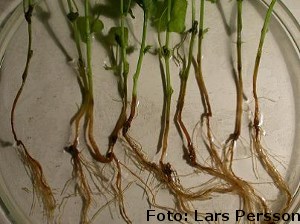Presentation in April 2010
Publications
Hossain, S., Bergkvist, G., Glinwood, R, Berglund, K., Mårtensson, A. Hallin, S & Persson, P. 2015. Brassicaceae cover crops reduce Aphanomyces pea root rot without suppressing genetic potential of microbial nitrogen cycling. Plant and Soil 392 (1-2), 227-238.
Hossain, S., Bergkvist, G., Berglund, K. Glinwood, R., Kabouw, P. Mårtensson, A. & Persson, P. 2014. Concentration- and time-dependent effects of isothiocyanates produced from Brassicaceae shoot tissues on the pea root rot pathogen Aphanomyces euteiches. Journal of Agricultural and Food Cemistry 62 (20) 4584-4591. DOI: 10.1021/jf501776c
Hossain, S. 2013. Impact of Brassicaceae cover crops on pea root rot (Aphanomyces euteiches) in subsequent peas. Swedish University of Agricultural Sciences Uppsala. Acta Universitatis agriculturæ Sueciae. 2013:78.[ Doctoral Thesis].
Hossain, S., Bergkvist, G., Berglund, K., Mårtensson, A., Persson, P. 2012. Aphanomyces pea root rot disease and control with special reference to impact of Brassicaceae cover crops, Acta Agriculturae Scandinavica, Section B, Soil & Plant Science, 62:6, 477-487.
The manuscript below is also included in the Doctoral Thesis:
Hossain, S., Bergkvist, G., Berglund, K., Mårtensson, A. Hallin, S. and Persson, P. Influence of Brassicaceae cover crops on ammonia-oxidising and nitrogen-fixing organism communities (manuscript).
